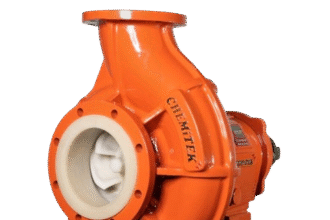Introduction
Have you ever stumbled upon a product code and wondered what it really signifies? If you’ve come across the intriguing string “Q/28xh16-2002,” you’re not alone. Deciphering product codes can feel like cracking a secret language, but understanding them is essential for making informed purchasing decisions. This guide will help you unravel the mystery behind Q/28xh16-2002, so you can confidently find quality products that meet your needs. Let’s dive into the world of product codes and discover how to navigate through them effectively!
Understanding Product Codes
Product codes serve as a universal language in the world of commerce. They help identify specific items with precision and ease. Each code is unique to its respective product, making it simpler for manufacturers, retailers, and consumers alike.
Understanding these codes can empower you in your purchasing decisions. They often reveal vital information about the item’s origin, features, or even manufacturing date.
Take time to familiarize yourself with different coding systems used across various industries. Some might follow alphanumeric formats like Q/28xh16-2002 while others lean towards numerical sequences.
When shopping or researching products online, knowing how to interpret these codes can save you from potential pitfalls. It allows for comparison shopping and ensures that you choose quality over quantity when selecting items for purchase.
What Does Q/28xh16-2002 Mean?
The code Q/28xh16-2002 is more than just a random string of characters. It serves as a unique identifier for products, hinting at specific details about their design and specifications.
The “Q” often indicates the product category or type. The following numbers and letters break down the dimensions or features. For instance, 28xh16 could refer to size attributes such as width and height in inches.
The suffix “2002” usually represents the year of manufacture or a batch designation. This can provide insight into production timelines and potential quality standards relevant to that period.
Understanding this code allows consumers to assess what they’re purchasing with better clarity, ensuring it meets their needs before buying. Each part of Q/28xh16-2002 plays an integral role in its identification process within the marketplace.
Identifying the Manufacturer and Country of Origin
When you encounter the code Q/28xh16-2002, it’s crucial to identify the manufacturer and its country of origin. This information can significantly impact product quality and authenticity.
Start by checking online databases or regulatory websites that track manufacturers associated with specific codes. Many brands also offer transparency on their official sites about where they produce their goods.
Look for additional identifiers within the packaging. Often, a manufacturer’s name or logo accompanies such codes, providing further insights into their reputation.
Country of origin is not just a formality; it can indicate production standards and labor practices. Knowing where a product comes from helps ensure that you’re making informed choices aligned with your values.
How to Decode the Batch Number
Decoding the batch number can seem daunting, but it’s simpler than you might think. Start by locating the batch number on the product packaging. It often appears alongside other identifiers.
Next, pay attention to the format. Many manufacturers use a combination of letters and numbers that indicate production details like date and location. For example, a sequence may represent the year and week of manufacture.
Look for any patterns or specific codes that relate to quality control checks. Some brands incorporate unique markers for traceability purposes.
If you’re unsure about certain digits or letters, consult online resources or reach out to customer service representatives from the brand. They can shed light on specific coding practices used in their products.
Understanding this information enhances your confidence when selecting items marked with Q/28xh16-2002 code and ensures you’re making informed purchases.
Tips for Finding Quality Products with Q/28xh16-2002 Code
When searching for quality products marked with the Q/28xh16-2002 code, start by researching the brand associated with it. A reputable manufacturer often indicates reliability and high standards.
Check customer reviews online. Feedback from other buyers can provide insights into product performance and durability. Look for patterns in their experiences to gauge quality.
Verify certifications tied to the product. Certifications can serve as a mark of trustworthiness and adherence to industry standards.
Don’t hesitate to ask questions before making a purchase. Contacting customer service or visiting forums can clarify any doubts you may have about the product’s specifications or suitability.
Comparing prices across different retailers is crucial. While cheaper options might be tempting, they could compromise on quality, so balance cost against value effectively when considering your choice.
Common Products with Q/28xh16-2002 Code
Products featuring the Q/28xh16-2002 code span a variety of industries, making them quite versatile.
You’ll often find this code on electronics, particularly components like circuit boards and connectors. These items are crucial for ensuring devices function properly.
Additionally, home appliances may also bear the Q/28xh16-2002 mark. From microwaves to washing machines, understanding this code can help you assess quality during your purchase.
Another area where this product code is prevalent is in automotive parts. Whether it’s filters or batteries, knowing what you’re looking at can save time and money.
Don’t overlook consumer goods either; many everyday items use this coding system to signify their specifications and origin details. By familiarizing yourself with these products, you empower your shopping choices significantly.
Conclusion
Navigating product codes can feel daunting, but understanding them opens doors to informed purchasing decisions.
The Q/28xh16-2002 code offers valuable insights into a product’s specifications and origins. By decoding it, you enhance your ability to choose quality items that meet your needs.
Stay curious as you explore products with this code. Each one has its unique story waiting for discovery.
As you continue shopping, keep these tips in mind. They will guide you toward making smarter choices while ensuring satisfaction with every purchase.
Embrace the journey of finding the right products. Your diligence will pay off in long-lasting value and enjoyment.
FAQs
Q:1 What is the significance of the Q/28xh16-2002 code?
A: The Q/28xh16-2002 code serves as a unique identifier for specific products. It helps consumers and retailers differentiate between various items in the market.
Q:2 Where can I find products with the Q/28xh16-2002 code?
A: You can typically find these products at major retail stores, online marketplaces, or directly through manufacturers’ websites. Be sure to check product descriptions carefully.
Q:3 How can I verify if a product is genuine with this code?
A: To ensure authenticity, cross-check the manufacturer’s details associated with the Q/28xh16-2002 code. Look for any certifications or quality markers that validate its legitimacy.
Q:4 Are all products with this code high quality?
A: Not necessarily. While many reputable brands use such codes to signify quality, it’s wise to research reviews and ratings before making a purchase.
Q:5 Can batch numbers provide insights into product recalls or safety issues?
A: Yes, batch numbers often link back to production runs. Checking these against official recall lists can inform you whether your product has been flagged for safety concerns.
Q:6 Is there an easy way to remember what each part of the Q/28xh16-2002 means?
A: Creating a simple mnemonic device might help you retain key aspects of what each segment represents regarding specifications and manufacturer information.
Q:7 Do different industries utilize similar coding systems like Q/28xh16-2002?
A: Absolutely! Various sectors—such as electronics, pharmaceuticals, and food—often have their own coding systems that serve comparable purposes for identification and tracking.

















